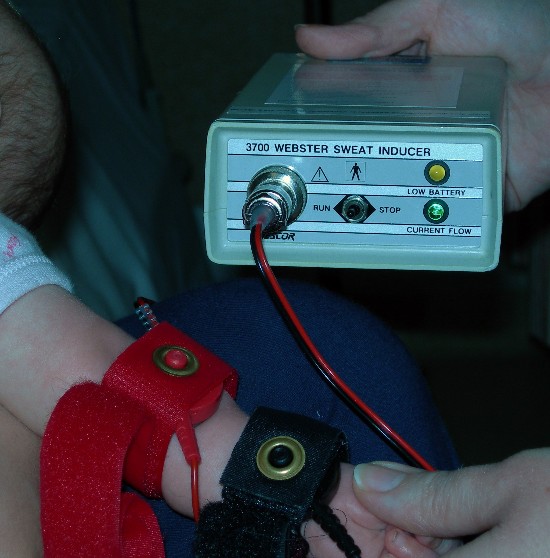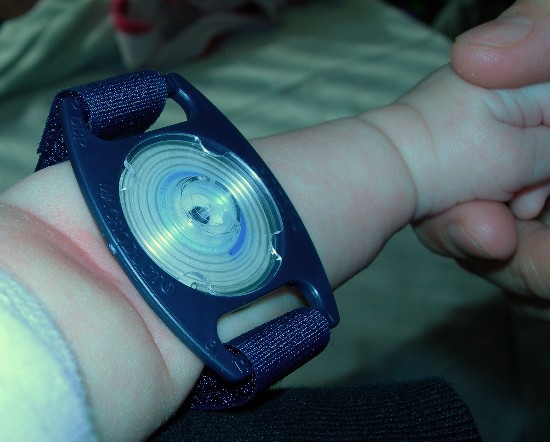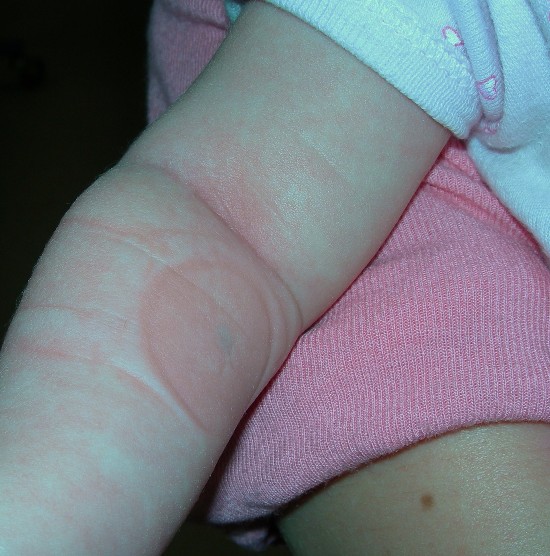- 0044 (0) 207 351 8754
- [email protected]
- Royal Brompton Hospital - London
Your doctor has asked for your child to have a sweat test. This is a test to diagnose a condition called cystic fibrosis (CF). The test measures the amount of chloride in the sweat.
Since July 2007, all newborn babies in the UK are screened for CF on the ‘heel prick’ blood test, which is usually taken six days after birth. While this might indicate that a child has CF, the diagnosis needs to be confirmed by a sweat test.
In addition a sweat test may need to be carried out on an older child who has symptoms suggestive of CF, and who was either born before newborn screening started in the UK, or was born outside the UK. Symptoms that might indicate the need for a sweat test can include repeated chest infections, persistent cough, nasal polyps, poor weight gain, and chronic diarrhoea.
CF is an inherited disorder which largely affects the lungs and digestive system. The genetic defect causes some of the organs in the body to produce thicker and stickier fluid than normal. This increases the likelihood of getting chest infections. CF fibrosis may also affect the digestive system with the result that it may be difficult to digest fatty foods and put on weight. However some children who are affected do not always show the most obvious symptoms.
• There is no special preparation needed.
• It is useful to bring a sweatshirt, jumper or cardigan for your child or baby to wear while the sweat is being collected.
• Your child may eat and drink throughout the procedure, so for babies you may want to bring their milk.
• Be prepared to be at the Hospital for approximately 1-2 hours.
• We will ask for your verbal consent before we proceed.
• A sweat test involves collecting sweat usually from the forearms, and in small babies the legs are sometimes used. The procedure is performed on two limbs at the same time to increase the reliability of the result.
• No needles are used.
• You will be able to stay with your child throughout the test.
• The test is carried out by a specially trained nurse.
• The forearm is cleaned with alcohol swabs followed by sterile water, and then dried with cotton wool.
• A cold gel pad is placed inside a plastic disc (the electrode). There are two of them – (red and black) and these are attached to the arm or leg with velcro straps.
• These electrodes are connected to a metal box and left in position for approximately 5 minutes whilst a very low electric current is passed through them.

Red & black electrodes which are commected to a sweat inducer, attached to the arm with velcro straps
• All your child feels is a mild tickling sensation – if anything at all.
• Your child will need to stay reasonably still and should avoid touching the disks.
• After the gel pads are removed the skin is cleaned again with sterile water, dried and a collecting duct applied. This is a small round plastic disc, which contains a coiled-up collecting tube.
• After the gel pads are removed the skin is cleaned again with sterile water, dried and a collecting duct applied. This is a small round plastic disc, which contains a coiled-up collecting tube.
• The disc is attached by velcro straps.

Disc with collecting tube attached to the arm with a velcro strap.
• The collecting duct is left in position for 20 to 30 minutes. While the sweat is being collected you and your child will be able to go to the waiting area and return when the ducts need removing.
• The collecting duct is left in position for 20 to 30 minutes. While the sweat is being collected you and your child will be able to go to the waiting area and return when the ducts need removing.
• Do not be alarmed by the fact a tiny electric current is passed through the skin. Children rarely feel anything at all, although some can feel a slight tingling.
• Occasionally the skin is red afterwards but this usually gets better quite quickly.

After the test, the arm remains red for a little while, the blue mark is the dye from the collecting tube and washes off.
• The nurse doing the test will be able to tell you when you will be given the result, this may be ready the same day, depending on the time of day the test is carried out, but will be the next morning if the test is carried out in late afternoon.
• Occasionally it is not possible to collect enough sweat, particularly if the child has dry skin from eczema. We may know immediately if there is not enough, or possibly only find out once the laboratory has the sample. If there is not enough sweat, the test will be repeated as soon as possible.
• Occasionally the test does not give a conclusive result as there as there is ‘grey area’ chloride level which means the test needs repeating and/or further investigations are necessary.
• If the level of chloride is low (i.e. normal) then we can assume your child does not have cystic fibrosis.
• If the chloride level is high, your child will be asked to attend for a repeat sweat test and blood may be taken for genetic testing, as this indicates a diagnosis of CF.
Your doctor has asked for your child to have a sweat test. This is a test to diagnose a condition called cystic fibrosis (CF). The test measures the amount of chloride in the sweat.
Since July 2007, all newborn babies in the UK are screened for CF on the ‘heel prick’ blood test, which is usually taken six days after birth. While this might indicate that a child has CF, the diagnosis needs to be confirmed by a sweat test.
In addition a sweat test may need to be carried out on an older child who has symptoms suggestive of CF, and who was either born before newborn screening started in the UK, or was born outside the UK. Symptoms that might indicate the need for a sweat test can include repeated chest infections, persistent cough, nasal polyps, poor weight gain, and chronic diarrhoea.
CF is an inherited disorder which largely affects the lungs and digestive system. The genetic defect causes some of the organs in the body to produce thicker and stickier fluid than normal. This increases the likelihood of getting chest infections. CF fibrosis may also affect the digestive system with the result that it may be difficult to digest fatty foods and put on weight. However some children who are affected do not always show the most obvious symptoms.
• There is no special preparation needed.
• It is useful to bring a sweatshirt, jumper or cardigan for your child or baby to wear while the sweat is being collected.
• Your child may eat and drink throughout the procedure, so for babies you may want to bring their milk.
• Be prepared to be at the Hospital for approximately 1-2 hours.
• We will ask for your verbal consent before we proceed.
• A sweat test involves collecting sweat usually from the forearms, and in small babies the legs are sometimes used. The procedure is performed on two limbs at the same time to increase the reliability of the result.
• No needles are used.
• You will be able to stay with your child throughout the test.
• The test is carried out by a specially trained nurse.
• The forearm is cleaned with alcohol swabs followed by sterile water, and then dried with cotton wool.
• A cold gel pad is placed inside a plastic disc (the electrode). There are two of them – (red and black) and these are attached to the arm or leg with velcro straps.
• These electrodes are connected to a metal box and left in position for approximately 5 minutes whilst a very low electric current is passed through them.

Red & black electrodes which are commected to a sweat inducer, attached to the arm with velcro straps
• All your child feels is a mild tickling sensation – if anything at all.
• Your child will need to stay reasonably still and should avoid touching the disks.
• After the gel pads are removed the skin is cleaned again with sterile water, dried and a collecting duct applied. This is a small round plastic disc, which contains a coiled-up collecting tube.
• After the gel pads are removed the skin is cleaned again with sterile water, dried and a collecting duct applied. This is a small round plastic disc, which contains a coiled-up collecting tube.
• The disc is attached by velcro straps.

Disc with collecting tube attached to the arm with a velcro strap.
• The collecting duct is left in position for 20 to 30 minutes. While the sweat is being collected you and your child will be able to go to the waiting area and return when the ducts need removing.
• The collecting duct is left in position for 20 to 30 minutes. While the sweat is being collected you and your child will be able to go to the waiting area and return when the ducts need removing.
• Do not be alarmed by the fact a tiny electric current is passed through the skin. Children rarely feel anything at all, although some can feel a slight tingling.
• Occasionally the skin is red afterwards but this usually gets better quite quickly.

After the test, the arm remains red for a little while, the blue mark is the dye from the collecting tube and washes off.
• The nurse doing the test will be able to tell you when you will be given the result, this may be ready the same day, depending on the time of day the test is carried out, but will be the next morning if the test is carried out in late afternoon.
• Occasionally it is not possible to collect enough sweat, particularly if the child has dry skin from eczema. We may know immediately if there is not enough, or possibly only find out once the laboratory has the sample. If there is not enough sweat, the test will be repeated as soon as possible.
• Occasionally the test does not give a conclusive result as there as there is ‘grey area’ chloride level which means the test needs repeating and/or further investigations are necessary.
• If the level of chloride is low (i.e. normal) then we can assume your child does not have cystic fibrosis.
• If the chloride level is high, your child will be asked to attend for a repeat sweat test and blood may be taken for genetic testing, as this indicates a diagnosis of CF.
© Dr. Ian Balfour-Lynn
Powered by LondonWeb
Designed by CrestanaDS